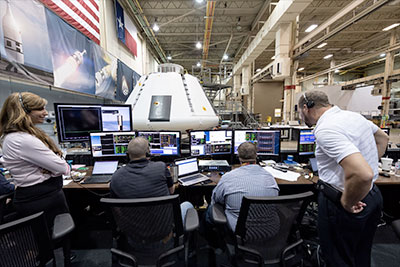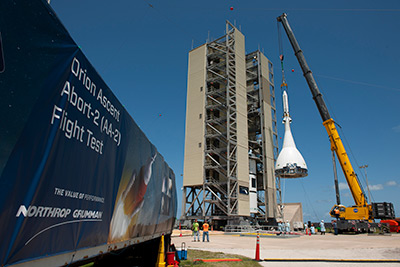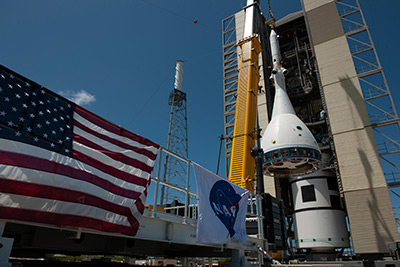 Space News space history and artifacts articles Messages space history discussion forums Sightings worldwide astronaut appearances Resources selected space history documents |
If you have previously registered, but forgotten your password, click here.
This full-stress test of the LAS, called Ascent Abort Test 2 (AA-2), will see a booster, provided by Orbital ATK, launch from Cape Canaveral Air Force Station in Florida, carrying a fully functional LAS and a 22,000 pound Orion test vehicle to an altitude of 32,000 feet at Mach 1.3 (over 1,000 miles an hour). At that point, the LAS’ powerful reverse-flow abort motor will fire, carrying the Orion test vehicle away from the missile. Timing is crucial as the abort events must match the abort timing requirements of the Orion spacecraft to the millisecond in order for the flight test data to be valid. NASA is accelerating the timeline of the test to provide engineers with critical abort test data sooner to help validate computer models of the spacecraft’s LAS performance and system functions. “This will be the only time we test a fully active launch abort system during ascent before we fly crew, so verifying that it works as predicted, in the event of an emergency, is a critical step before we put astronauts on board,” said Don Reed, manager of the Orion Program’s Flight Test Management Office at NASA’s Johnson Space Center in Houston. “No matter what approach you take, having to move a 22,000-pound spacecraft away quickly from a catastrophic event, like a potential rocket failure, is extremely challenging.” The test will verify the LAS can steer the crew module and astronauts inside to safety in the event of an issue with a Space Launch System rocket when the spacecraft is under the highest aerodynamic loads it will experience during a rapid climb into or beyond orbit for deep-space missions. The LAS is divided into two parts: the fairing assembly, which is a shell composed of a lightweight composite material that protects the capsule from the heat, wind and acoustics of the launch, ascent, and abort environments; and the launch abort tower, which includes the system’s three motors. In an emergency, those three motors — the launch abort, attitude control, and jettison motors — would work together to pull Orion away from a problem on the launch pad or during SLS first stage ascent, steering and re-orienting for LAS jettison, and pulling the LAS away from the crew module. During a normal launch, only the LAS jettison motor would fire, once Orion and the Space Launch System clear most of the atmosphere, to clear the LAS from Orion and allow the spacecraft to continue with its mission. Engineers at several NASA centers already are building the Orion test article that has many of the design features and the same mass as the capsule that will carry crew. Because the test is designed to evaluate Orion’s launch abort capabilities, the crew module used for AA-2 will not deploy parachutes after the abort system is jettisoned, nor will it have a reaction control system with thrusters needed to help orient the capsule for a parachute-assisted descent and splashdown after the LAS is jettisoned. The AA-2 test development and execution is a partnership between Orion Program and the Advanced Exploration Systems Division, the technology advancement organization in the Human Exploration and Operations Mission Directorate at NASA Headquarters in Washington. NASA Johnson is responsible for producing the fully assembled and integrated crew module and separation ring, including development of unique avionics, power, software and data collection subsystems and several elements of ground support equipment. The agency’s Langley Research Center in Hampton, Virginia, will build the primary structure of the crew module test article and a separation ring that connects the test capsule to the booster and provides space and volume for separation mechanisms and instrumentation. 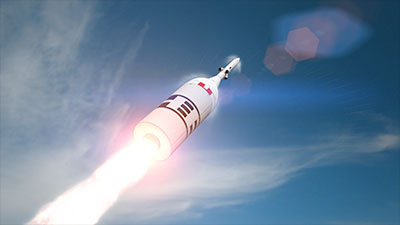 Critical sensors and instruments used to gather data during the test will be provided by NASA’s Armstrong Flight Research Center in Edwards, California. The integrated test article will be delivered to NASA’s Kennedy Space Center in Florida, where it will be processed before launch. NASA’s prime contractor, Lockheed Martin, is providing the fully functional Orion LAS, and the crew module to service module umbilical and flight design retention and release mechanisms. In 2010, an earlier version of Orion’s LAS was tested to evaluate the performance of the system in during Abort Test Booster-1 at the White Sands Missile Range in New Mexico. For Exploration Mission-1, NASA’s first integrated flight test of Orion atop the powerful SLS — the abort system will not be fully active since astronauts will not be inside the spacecraft. NASA is working toward a December 2019 launch for EM-1. | ||||||||
| Robert Pearlman | From Johnson Space Center: Orion's Ascent Abort-2 crew module arrives at Johnson Space Center for final assembly. Read more about this flight test. 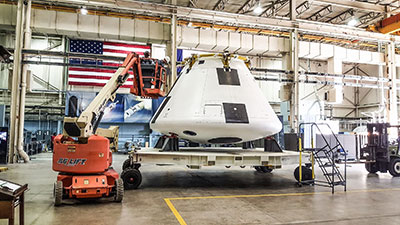 | |||||||
| Robert Pearlman | collectSPACE Year to abort: NASA preps Orion capsule for 2019 Ascent Abort-2 test 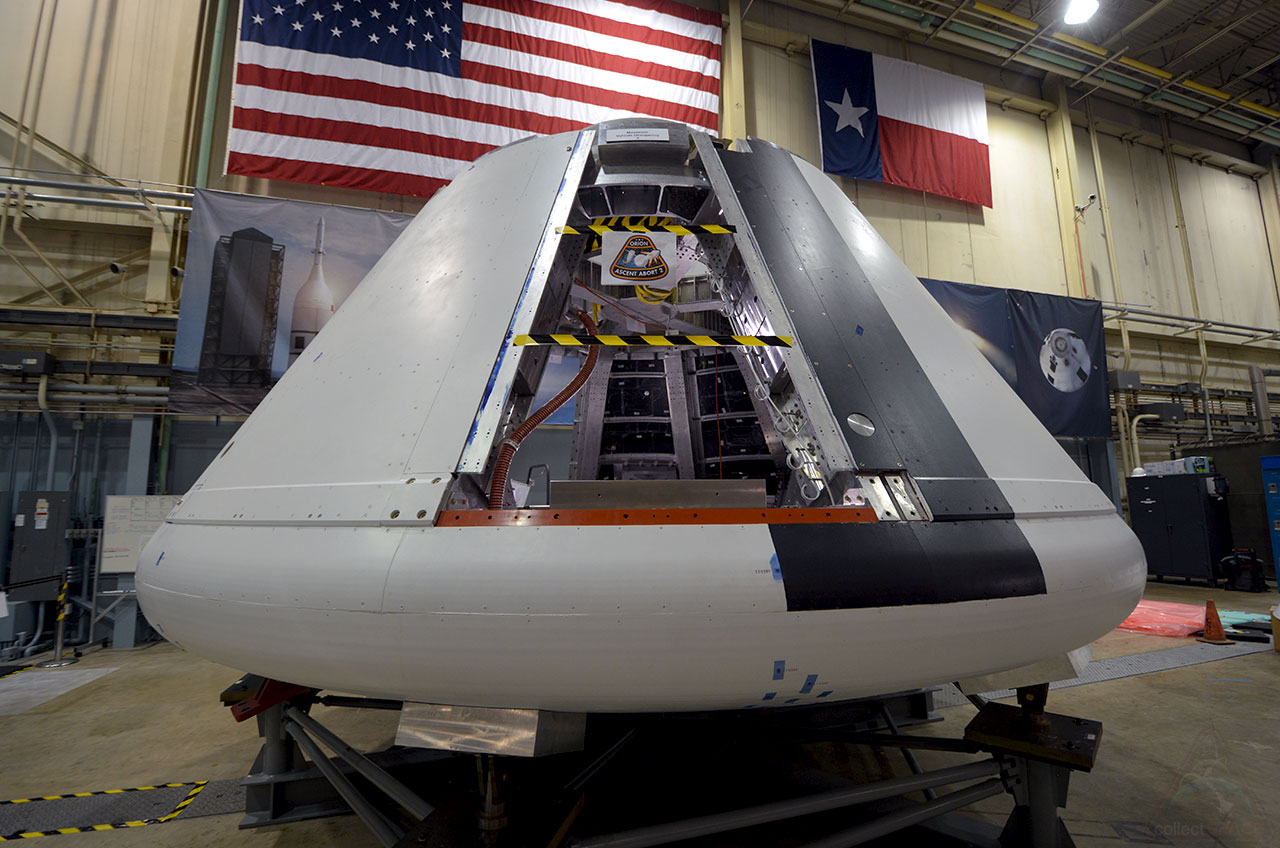 | |||||||
| Robert Pearlman | NASA release Team Powers On AA-2 Orion Module, Preps for Flight Test Simulation | |||||||
| Robert Pearlman | From NASA's Orion Twitter feed: Orion's Ascent Abort-2 crew module leaves Johnson Space Center enroute to Kennedy Space Center where it will be integrated with the launch abort system and the booster ahead of the May 2019 flight test. 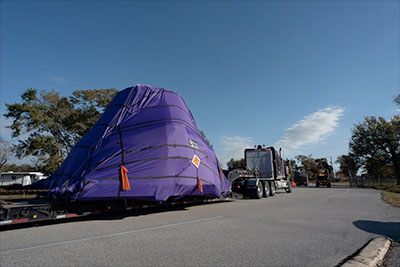 | |||||||
| Robert Pearlman | From NASA's Orion Twitter feed: NASA is targeting June 12 as the launch date for Orion's Ascent Abort-2 test, a critical milestone for human missions to the Moon! The test will show Orion's Launch Abort System can carry a crew to safety in case of an emergency during launch. | |||||||
| Robert Pearlman | From NASA on Facebook: NASA is now targeting July 2 for Orion's Ascent Abort-2 test flight from Cape Canaveral Air Force Station in Florida. This date provides additional time for work on the launch abort system and takes into account Eastern Range availability. | |||||||
| Robert Pearlman | NASA photo release The test version of Orion attached to the Launch Abort System for the Ascent Abort-2 (AA-2) flight test was moved by crane into the vertical integration facility at Space Launch Complex 46 at Cape Canaveral Air Force Station in Florida on May 23, 2019. The flight test article was stacked atop the booster, which was procured by the U.S. Air Force and manufactured by Northrop Grumman. 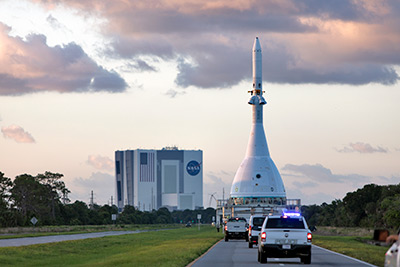 | |||||||
| Robert Pearlman | From NASA Administrator Jim Bridenstine via Twitter: Ascent Abort flight test vehicle on the pad at Cape Canaveral Air Force Station. The July 2nd flight test will demonstrate Orion's safety system critical to returning astronauts to the moon! 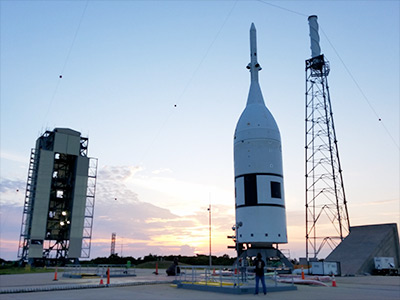 | |||||||
| Robert Pearlman | collectSPACE NASA abort test builds on Apollo legacy to keep Artemis crews safe 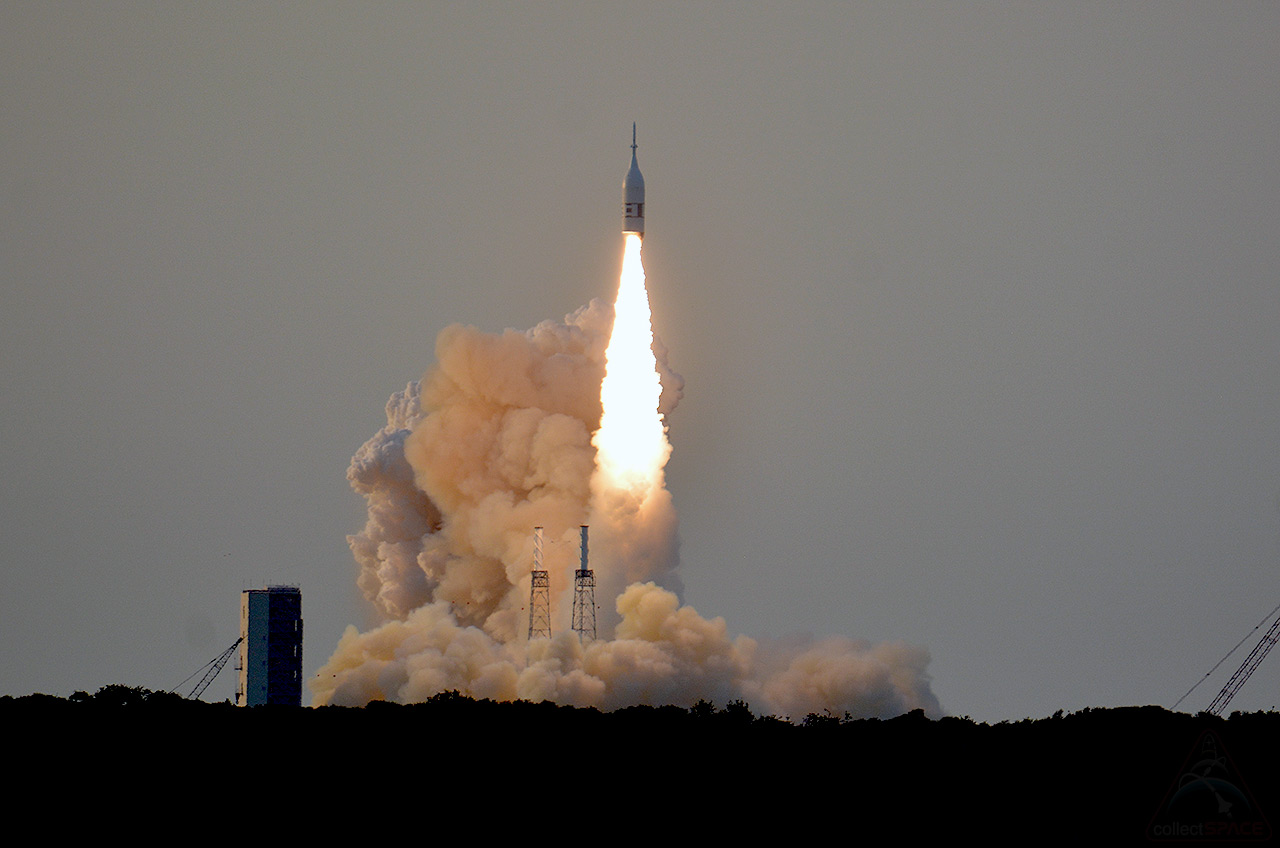 | |||||||

